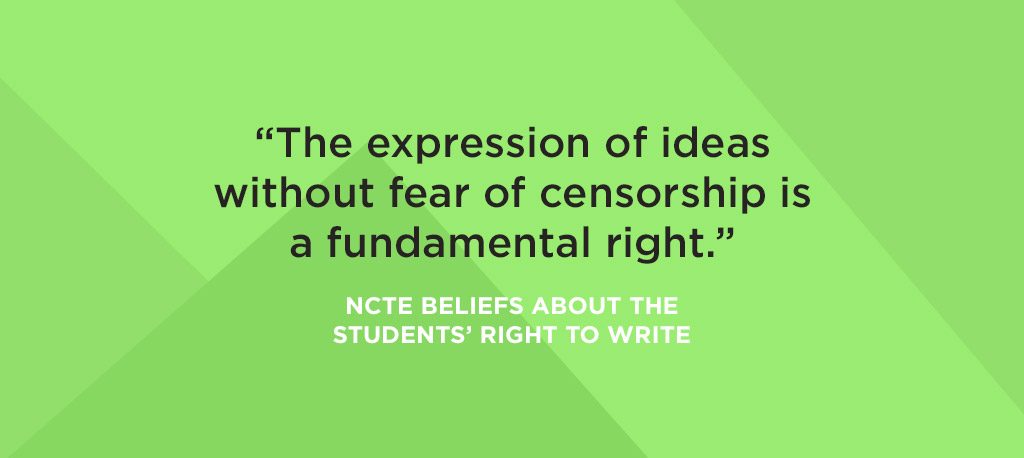Just as our students must have the right to read, broadly and with choice, they also must have the right to write. Our job is to help our students “find their words,” to guide them
“[t]hrough the often messy process of writing. . .[as they] develop strategies to help them come to understand lessons within the curriculum as well as how their language and ideas can be used to communicate, influence, reflect, explain, analyze, and create.”
–NCTE Beliefs about the Students’ Right to Write
The magic of writing, as the Voices from the Middle Facebook Live Event with Penny Kittle so aptly demonstrates, is connection to self. We can’t deny students this.
“Andrea Davis Pinkney’s Speakerly Texts: Models for Young Writers” points out the importance of having students analyze the language used by Andrea Pinkney in Sojourner Truth’s Step-Stomp Stride, for example, to learn that
“All good writers think very carefully about the choices they make . . . in order to express their ideas in ways that are most powerful and true.”
In her 1995 CCC article “Freedom, Form, Function: Varieties of Academic Discourse,” Lillian Bridwell-Bowles claims academic writing still needs the upset and complement of alternate writing:
“writing that is not always about later, about jobs and careers, but writing that is about themselves as people, as individuals and citizens of various communities.”




